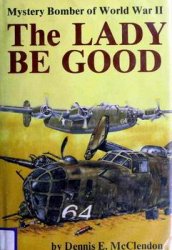HEBREW UNION COLLEGE Qemsalem). See Nelson Glueck School of Biblical Archaeology.
HEBRON (Ar., El-Khalil), site situated some 30 km (18 mi.) south of Jerusalem (3i°3o' N, 35° E). Twenty-five springs in the area, along with two ancient pools, provided an adequate water supply in antiquity for tlte inltabitants, their flocks, and tlieir fields. The ancient city is mentioned more than sixty times in the Hebrew Bible, from Genesis to Nehemiah, as well as in tlte Pseudepigraphy. Traditionally built “seven years before Zoan in Egypt,” the city was undoubtedly a Canaanite cultic place, made important by the “Oak of Mamre,” under which Abraham is said to have pitched his tent, “built an altar to the Lord,” entertained divine messengers, and pleaded for the innocents of Sodom. Much later, the spies of Moses beheld the richness of Ple-bron’s vineyards. After the Hebrew tribes occupied tlte land, Hebron was “given” as an inheritance to Caleb and became a city of Judah, a place of refuge, and a Levitical sinecure (Jgs. 1:20; I Chr. 6:57).
In tlte days of King David, the city achieved its greatest renown. At the death of Saul, David settled there and was subsequently anointed king of Judah. Joab’s murder of Abner precipitated the fall of the unstable house of Saul in the north, and the elders of Israel came to Hebron to proclaim David king over all the land (2 Sm. 5:3). Jerusalem became the new capital of the United Monarchy (2 Sm. 5:7), but it was to Hebron tltat Absalom, David’s son, went to attempt tire usurpation of his father’s throne (2 Sm. 15:10-11). Josephus (Antiq. 8.2.1) assigns Solomon’s vision to Hebron, but in the Hebrew Bible it is mentioned again only in the lists of Rehoboam’s fortified cities (2 Chr. ii:io).
Extrabiblical evidence may indicate that Hebron was an early Canaanite royal, as well as cultic, city, and some scholars have seen it as a possible Hyksos city during the Middle Bronze Age. [See Hyksos.] The Amarna letters include a possible reference to a local prince named Shuwardata, who may have ruled there; tire Medinet Habu list of Rameses III may also contain a possible reference to the site. [Aee Amarna Tablets.] Stamped jar handles from the eightir century BCE suggest that the city functioned then as a royal pottery works of some sort. Wares bearing the name of the city are found throughout the borders of ancient Palestine.
No Assyrian or Neo-Babylonian records note tire existence of tire site, but its lush fields could hardly have escaped the notice of eitlrer set of conquerors. After tire fall of Jerusalem, Edomites (Idumeans) occupied the area but were dislodged later by Judas Maccabaeus, who took the city and pulled down its fortifications in about 164 bce. Herod the Great refurbished the city as part of his extensive building operations and enclosed the Cave of Machpelah, as his characteristic masonry there still proclaims. During the First
Jewish Revolt, Shim'on bar Giora captured the city (in 68 ce), but tire Roman general Cerealis recaptured and destroyed it. The emperor Hadrian later had a road built and established a market of some prominence nearby, f&e First Jewish Revolt.] In the seventh cenmry, the prophet Muhammad gave Hebron to the Tamin ed-Dari tribe and its families.
During the Latin Kingdom the site was known as the Castle of St. Abraham and was a major link in tire fortress cities guarding the Idngdom. In 1100 the city became tire fief of Gerhard of Avenues, but it was under Baldwin I that tire city achieved its military strength. It was also in this later period that the city’s glass factories were revived, which continue to the present time. In 1167 Rainald became the Latin bishop of Plebron, furtlrer elevating tire city’s position. With the fall of the Latin Kingdom, the city reverted to Islamic control and soon became an important Muslim religious site.
The modern Arabic name, El~Khalil (“the friend”), harkens back to the Abrahamic saga (“the friend” = Abraham—2 Chr. 20:7, in which Abraham is called the “friend” of God; tire site is also called variously Hebron and Kiriath-Arba in the biblical text). The designation Kiriath-Arba, after Arba, father of the giantlike Anakim (Jos. 14:13, 15:13, 34, 20:7, 21:11; Gn. 23:2, 35:27; Jgs. 1:10) led Jewish writers, followed by Jerome, to curious etymological gymnastics. The Hebrew word ’arba'' (“four”) was taken to mean the “four”—Abraham, Isaac, Jacob, and Adam. During the Middle Ages, Plebron was also known as Castellunr Afra-mia, Karicarba, and Arbothe. Charles Clermont-Ganneau also identified the site with the Roman Diocletianopolis. [5ee the biography of Clermont-Ganneau.]
Modern archaeological investigation of the site began in 1964, after a preliminary survey of the area in 1963 by tire American Expedition to Hebron, led by Philip C. Hammond. Two furtlrer seasons were conducted by the same expedition, in 1965 and 1966. The American expedition concentrated on the observed ancient ruins located on Jebel er-Rumeide, across tire valley from tire modern city. Excavation produced material remains from the Chalcolithic, Early Bronze, Middle Bronze, Late Bronze, Iron, Hellenistic, Byzantine, and Islamic periods. Most significant was the identification of tire city’s original MB wall, which dates to the first half of the elghteeirtlr century bce and the mapping of its perimeters. Chalcolithic, EB, MB (“Hyksos”), and Byzantine burials were recovered, as well as ceramic and otlrer cultural materials from tlrose periods and extending into the Early Islamic period. Excavations were renewed at the site from 1983 to 1986 by Avi Ofer and Tel Aviv University. Major finds from those excavations included a fragment of cuneiform tablet written in sixteentlr-seventeentlr-century bce East Altkadian and jar handles bearing tlte royal hnlk stamp.
BIBLIOGRAPHY
Anbar, Moshc, and Nadav Na’aman. “An Account Tablet of Sheep from Ancient Hebron,” Tel Aviv 13-14 (1987): 3-12.
Hammond, Philip C. “David’s First City: The Excavation of Biblical Hebron, 1964.” Princeum Seminary Bulletin 58,2 (1965): 19-28,
Hammond, Philip C, “Ancient Hebron, die City of David,” Natural Histoiy 75,5 (1966): 42-49,
Hammond, Philip C, “Plebron,” Revue Bibliqiie 73 (1966): 566-569.
Hammond, Philip C. “Plebron, cite de Juda et premiere capitale de David.” Bible ei Terre Saint 80 (1966): 6-8.
Hammond, Philip C, “The American Expedition to Hebron.” Explorers Journal4S4 (1967): 232-244.
Philip C. Hammond
HEINRICH, ERNST (1899-1984), scholar of ancient Near Eastern architecture and professor of architectural history and Bauaufnahme (the recording of buildings) at the Technical University of Berlin (1951-1965). Heinrich’s scholarship embraces tlie prehistoric periods in the Near East tlirough classical antiquity to nineteentli-century urban development in Berlin and its reconstruction after World War II.
The son of an elementary school principal, Heinrich pursued a degree in architecture, became an assistant professor of architectural history, and later oversaw tlie preservation of historic monuments in Potsdam and Trier. As a government architect, he met Ernst Walter Andrae, who entrusted him with the final publication of the 1902-1903 German excavations at Fara (1931). [See Fara.] Fleinrich gained practical experience as architect on the German excavations at Uruk-Warka (1930-1938), which generated numerous publications (1932, 1934-1939). Uruk-Warka.] He is noted best for his then exemplary excavation and publication of several temples and cult precincts at Eanna and area or square (plan quadrant) K XVII, which includes the first high temple (White Temple) on the Anu ziggurat. Together witlt Adam Falkenstein, he conducted the first survey of the region surrounding Warka (1938, p. 3iff.). The results of his deep sounding at Eanna (1932, p. 6ff.) are still central to the chronology of the prehistoric and early historical periods in Mesopotamia. His later fieldwork included Tell Fa-khariyah, Munbaqa, and Habuba Kabira in Nordi Syria, [See Fakliariyah, Tell; Habuba Kabira.]
Heinrich’s lifetime research on ancient Near Eastern architecture was crowned by a series of articles and monographs that concentrate on Mesopotamia. A general overview (197s) and an article on domestic architecture (19721975) were followed by three volumes devoted to the development of temples and temple precincts (1982) and palace architecture (1984).
Heinrich was a consultant at tlie German Archaeological Instimte beginning in 1942. He later served as a board member of the Koldewey Society and the German Oriental Society (Deutsche Orient-Gesellschaft), where he succeeded
Andrae as president. Heinrich received the Order of the Federal Republic of Germany in 1974.
[S’efi also Deutsche Orient-Gesellschaft; and the biographies of Andrae and Koldewey.]
BIBLIOGRAPHY
For appreciations of Heinrich’s life and work, see Barthel Hrouda in Mitleiliingen der Deiitschen Orient-Gesellschaft Ii6 (1984): 7-9, and Ursula Seidl in Archivfiir Orientforschung 31 (1984); 234-235. For a complete list of Heinrich’s publications up to 1974, see Gisela Siegenthaler, “Bibliographic von Ernst Heinrich,” Archdologische Milteilungen aus Iran 7 (1974): 9-14. A list of selected publications by Heinrich follows.
Eara: Ergebnisse der Ausgrabungen der Deiitschen Orientgesellschaft in Para undAbu Halab. Edited by Walter Andrae. Berlin, 1931. Final report of tlte German excavations conducted in 1902-1903, providing detailed information on the architecture and traceable small finds (Jem-det Nasr to Isin-Larsa period). Information on their context is included in Harriet P. Martin, Fara: A Reconstruction of the Ancient Mesopotamian City of Shunippak (Birmingham, 1988), where corrections are made to Fleinrich’s original publication (Appendix I), which is reproduced on microfiche.
Vierter Vorldufiger Bericht ilher die von der Notgemeinschaft der Deutschen Wissenschaft in Unik unternommenen Ausgrabungen. Berlin, 1932. See “Die Schichten und ihre Bauten” (pp. 6-24).
Schilf und Lehm: Ein Beitrag zur Baugeschichte der Sumerer. Studien zur Bauforschung, no. 6. Berlin, 1934a.
Fiinfter Vorldufiger Bericht iiber die von der Notgemeinschaft der Deutschen Wissenschaft in Unik unternommenen Ausgrabungen. Berlin, 1934b. See “Arbeiten in Eanna, im Stadtgebiet und im Siidbau” (pp. 5-38). Sechster Vorldufiger Bericht iiber die von der Deutschen Porschungsgemein-schaft in Uruk-Warka unternommenen Ausgrabungen. Berlin, 1935. Kleinfunde aus den archaischen Tempelschichten in Uruk-Warka. Berlin, 1936.
Achler Vorldufiger Bericht iiber die von der Deutschen Forschungsgemein-schaft in Uruk-Warka unternommenen Ausgrabungen. Berlin, 1937. See “Die Grabungen im Planquadrat K XVII” (pp. 27-55).
Neunter Vorldufiger Bericht iiber die von der Deutschen Forschungsgemein-schaft in Uruk-Warka unternommenen Ausgrabungen. Berlin, 1938. See “Grabungen im Gebiet des Anu-Antum-Tempels” (pp. 19-30), and “Forschungen in der Umgebung von Warka” (with A, Falkenstein, PP - 31-38). For the dating, see Heinrich 1982 (pp. 35-39).
Zehnter Vorldufiger Bericht iiber die von der Deutschen Forschungsgemein-schaft in Uruk-Warka unternommenen Ausgrabungen. Berlin, 1939. See “Grabungen im Gebiet des Anu-Antum-Tempels” (pp. 21-33). For the dating, see Heinrich 1982 (pp. 35-39).
“Haus.” In Reallexikon der Assyriologie und VorderasiatichenArchdologie, vol. 4, pp. 176-220. Berlin, 1972. Reference article on house forms from the Mesolithic to Neo-Babylonian periods in Palestine, Syria, Anatolia, Iran, and Soviet Armenia.
“Sumerisch-aldcadische Architektur” and “Architektur von der alt - bis zur spatbabylonischen Zeit.” In DerAlte Orient, edited by Winfried Orthmann, pp. 131-158, 241-287. Propylaen Kunstgeschichte, vol. 14. Berlin, 1975.
Die Tenipel und Heiligtiimer im alien Mesopotamien. Denkmiiler Antiker Architektur, 14. Berlin, 1982. Typological and morphological investigation of temples and temple precincts from the Late Uruk to the Seleucid periods, with a useful update on dating.
Die Paldste im alien Mesopotamien. Denkmaler Antiker Architektur, 15. Berlin, 1984. Survey of palace architecture from the Uruk to NeoBabylonian periods.
Diana L. Stein




 World History
World History


![Road to Huertgen Forest In Hell [Illustrated Edition]](/uploads/posts/2015-05/1432477693_1428700369_00344902_medium.jpeg)






